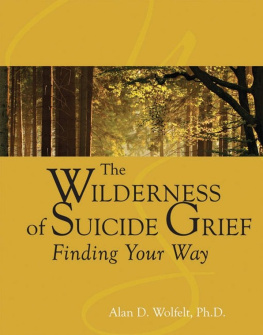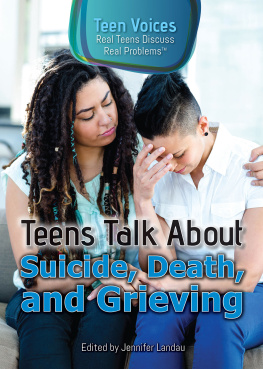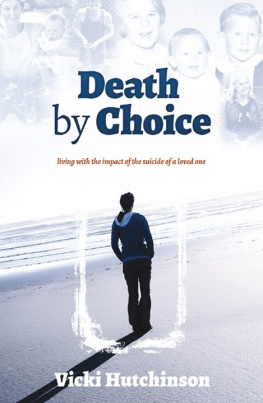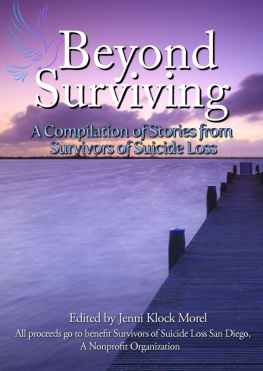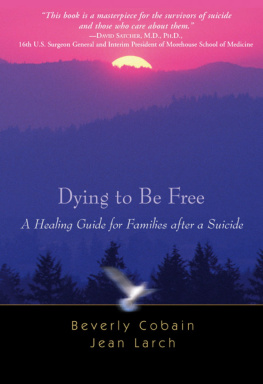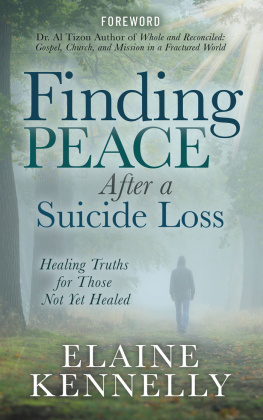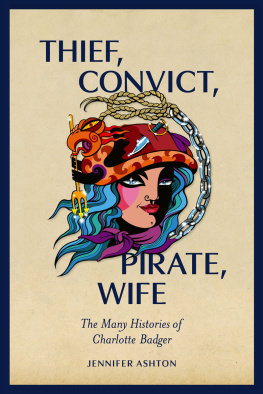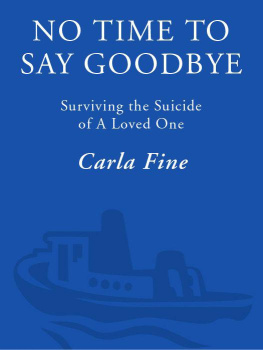Contents
To Alex and Chloe,
and to Dr. Rob Ashton,
who created them with me
and adored them as much as I do.
A portion of the proceeds from this book will be donated to Vibrant Emotional Health, which administers the National Suicide Prevention Lifeline and other programs related to crisis response and emotional well-being.
Dr. Jennifer Ashton is donating a portion of the proceeds from the sale of Life After Suicide to the American Foundation for Suicide Prevention in honor of Dr. Robert Ashton, Jr.
Life After Suicide is a book I could never have imagined writing, let alone from personal experience. Its taken me a year and a half to be able to offer a book thats focused on the life part of the title rather than the suicide, a book about my familys journey toward healing after a sudden, devastating tragedy and, Im eternally grateful to add, a book about other suicide survivors journeys as well. This is a book about hope, and strength, and resilience, and growth, and how, with a lot of help and love, we found our way out of a darkness I was sometimes afraid might swallow us whole.
The national headlines read Surgeon Jumps to His Death After Divorce from TV Personality Wife. The Surgeon was Dr. Robert Ashton, a brilliant thoracic specialist. Im the TV Personality Wife, Dr. Jennifer Ashton, ABC News Chief Medical Correspondent, a regular guest health expert on Good Morning America, Dr. Oz, and The Doctors, a doctor married to a doctor for twenty-one years, and proud mother of Alex and Chloe, the two greatest teenage children in the history of teenage children. Our family was immune from suicide... until we werent, until we found out the hard way that suicide is an equal-opportunity horror that strikes families regardless of race, color, religion, age, education, occupation, achievements, or socioeconomic status. Or, to put it in a simple medical analogy Ive come to use, all tushes are the same when theyre hanging out the back of a hospital gown.
Obviously, in order to share all the steps and missteps of our journey, and the journeys of the other suicide survivors who were generous enough to share theirs as well, I had to relive the past year and a half that started with a detective showing up in our living room to tell me about a note that was found on Robs remains. Writing this book has been a cathartic, revealing, therapeutic, scary, often excruciating exercise, but it will have been worth it if it leads even one of you to believe in that light at the end of a tunnel of despair I felt so lost in myself.
I hadnt fully realized until I looked back how far my kids and I have come, and how much weve learned about ourselves and the world around us, since the day Rob took his life. Im embarrassed to say, as a doctor, that I knew nothing about suicide and the stigma that surrounds it until I found myself feeling self-conscious, even ashamed, that my husband, my childrens father, killed himself. Since childhood Ive had a hardwired aversion to weakness, vulnerability, failure, insecurity, blame, fear, and flaws; but suddenly I was hit squarely in the face with each and every one of those qualitiesnot in Rob, but in myself. For a long time my impulse was to bury them, so that I could put up a strong front for Alex and Chloe; and because Im inherently private, it felt more comfortable to stay busy, appear as normal as possible, and, as best I could, hide the fact that I was shattered and struggling to put myself back together. There were two people with whom I shared everything I was thinking and feeling. Otherwise, exposing myself, my imperfections, and my familys challenges in the wake of Robs suicide, especially to millions of television viewers, seemed much too scary.
It took a while, and a lot of trial-and-error learningwhat helps and what doesnt, who your real friends are and who theyre not, what to expect and not expect when inevitable milestones come along, what to expect and not expect of yourself and those around youbefore I tentatively started reaching out to a handful of other suicide survivors, essentially to ask how they were getting through the recovery and healing process. I was hoping for words of wisdom and advice. What I got was so much more than that. I discovered that theres a huge community of incredible, heroic suicide survivors, sadly growing by the day as suicide reaches epidemic proportions, who are more than willing to say to hell with the stigma, tell their stories, and open their hearts and their arms; and it was more empowering than I can describe to hear them say, and mean, I know exactly what youre feeling, and youre not alone.
Then, a year and four months after Rob took his life, another devastating suicide hit the news; and as a result of my televised interview about it, and the overwhelming reaction to the interview, I was given the opportunity to learn another life-changing lesson: as empowering as it is to hear someone say and mean, I know exactly how youre feeling, and youre not alone, its even more empowering to come out of hiding, flaws and all, and say exactly the same thing to others who need it.
If youre one of those who needs it, or if you know and love someone who does, this book is for you. Im still learning. I still have days when this all seems surreal. I still wonder sometimes if Ill ever feel unbroken again, and I cant pretend that this whole hard journey is behind me once and for all. But Ive come far enough to reach out to you in these pages and promise, as part of an extraordinary community of survivors whose stories youre about to read, that there really is life after suicide.
It was Saturday, February 11, 2017.
I got up at around 6:00 a.m. Thanks to my regular appearances on ABCs Good Morning America, Im programmed to be an early riser. Six a.m. is sleeping in for me.
My sweet seventeen-year-old daughter, Chloe, was an hour and a half away at the Lawrenceville private boarding school and a proud member of their varsity ice hockey team. My wonderful eighteen-year-old son, Alex, was a freshman at Columbia University, but hed been home for a couple of days recovering from the flu. As I walked past his closed bedroom door I felt a wave of relief that hed chosen a college so close by and could come home when and if he needed to. I paused at his door to listen for a second. It was silent inside. He was obviously sound asleep, and I smiled at what a still, peaceful sleeper he is as I quietly kept walking.
Our apartment was on the fortieth floor of a doorman building in Fort Lee, New Jersey, with an incredible view of the New York skyline across the river and the George Washington Bridge about three hundred yards from our buildings entrance. I headed to the living room window to watch some scattered clouds pass over Manhattan and formulate my game plan for the day. Im hardwired to open my eyes every morning thinking, How much can I get done today? How much can I accomplish, and how soon can I start? For better or worse, the word leisurely is not in my vocabulary, and weekends are no exception.
I quickly decided to stick with my usual Saturday routinean 8:30 a.m. spin class at SoulCycle in the city, just fifteen minutes away on the Upper West Side, for my daily health fix, then home for a shower and to launch the rest of the day from there.
I happened to glance at the clock as I drove across the George Washington Bridge: 8:13. I was cutting it close; but I managed to make it to SoulCycle with a couple of minutes to spare, choose a bike in the back row as spin class got under way, and let my body take over so my mind could wander into the uncharted territory my life had become.
Eighteen days earlier, on January 23, Id been in a courtroom with my husband, a brilliant thoracic surgeon named Dr. Robert Ashton, Jr., finalizing our divorce. We hugged each other and cried when we left that courtroom, and we hugged again when he walked me to my car. Wed tried for more than a year to salvage our twenty-one-year marriage, with the help of family therapist Dr. Sue Simring. But finally one day, at the end of a session, she said out loud what Im sure we already knew:



